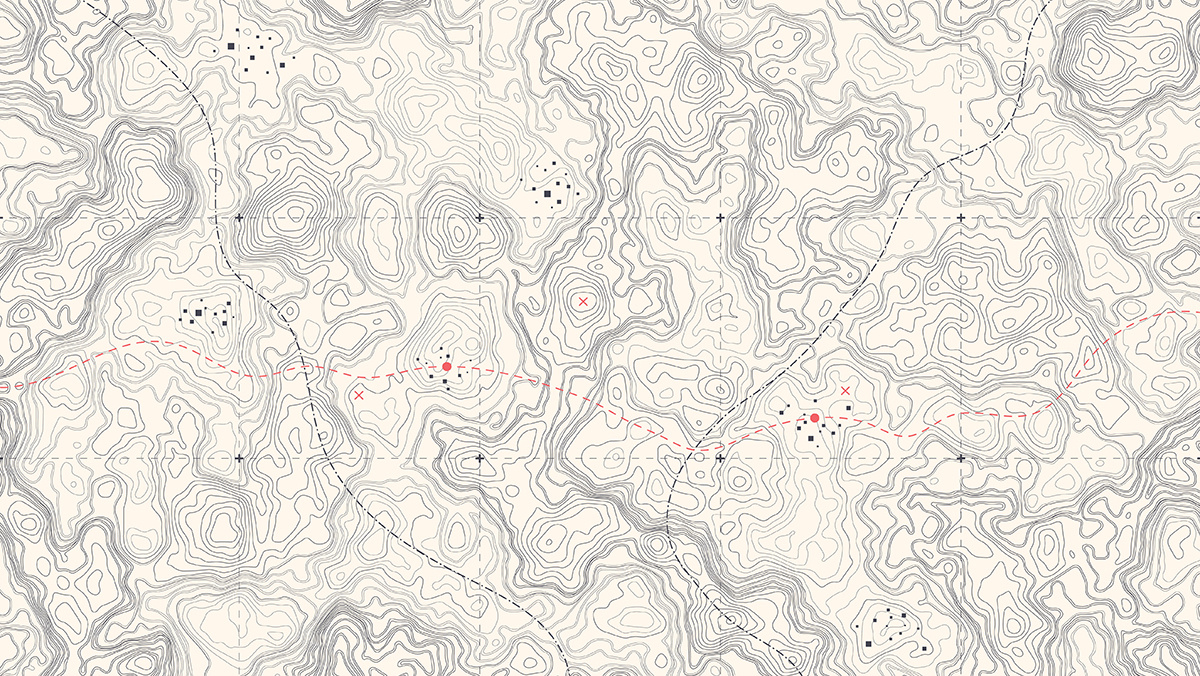Additional contributions to this article were provided by Ezri Carlebach and Olivia Asiedu-Ntow.
The Evolution of Brand Consultants: By Design, Not by Accident
By Gilmar Wendt

In the first of this series of articles on the evolution of brand consultancies, we examine how the backstory of management consulting gives us clues to the reinvention of our core proposition, and how we might learn to distinguish ourselves from the proliferation of competing expertise – which now includes everything from psychology wizards and CEO whisperers to legions of in-house anthropologists.*
Challenging people’s existing beliefs is a rough road.
Agency positioning and identities have, inevitably, shifted and multiplied over time. Since management consultants began to ‘get’ branding, they’ve been moving in on the branding patch. And we’ve all become intent on moving in on the strategy patch. Where does that leave us today as brand consultants?
A history of management consulting in three-and-a-half paragraphs
Frederick Taylor, Arthur D. Little, James O. McKinsey, Henry Gantt… these are some of the biggest stars in the MCU (Management Consulting Universe). Like their Marvel superhero counterparts, they all have fascinating origin stories and are very much products of the early twentieth century. Respectively an engineer, a chemist, an accountant, and another engineer, they were concerned with applying ‘scientific management’ to the optimization of human efficiency.
In the final stages of World War 2, the US military admitted civilians into the inner sanctum of strategic planning, mostly physicists whose expertise was needed to build the atom bomb. They retained a role after the war, due to the challenging complexities of Cold War scenarios. The RAND (Research and Development) Institute was originally a ‘think tank’ combining military and civilian experts to support military planning, but effectively became a consultancy when it was converted from USAF-sponsored project to nonprofit corporation in 1948.
The rise of management consulting from the 1950s to the 1970s was at least partly fuelled by the atomic prestige of the technocrat and funded by the shift from short-term project commissions to long-term client partnerships. But consultants were not always welcomed with open arms, as Robert Townsend made clear in his 1970 best-seller Up the Organization.
Management Consultants: The effective ones are the one-man shows. The institutional ones are disastrous. They waste time, cost money, demoralize and distract your best people, and don’t solve problems. They are people who borrow your watch to tell you what time it is and then walk off with it. Don’t use them under any circumstances.
However, plenty of business leaders happily ignored this advice, and, by 2019, on the eve of the COVID pandemic, a decade of ‘peak consulting’ had brought unprecedented success to a growing number of global consulting firms. Since then, rather than facing decline (margins are still good), consultants have faced diversification.
Manageable meets intangible
It’s no coincidence that modern management consulting emerged around the same time as modern branding. They share common roots in nineteenth century manufacturing and retail, and were both shaped by the global rise of technocracy and the ‘civilianisation’ of strategy. Yet it wasn’t until the 1990s that the financial value of brands, along with other business ‘intangibles’, gained recognition among the management superheroes. Which is ironic, given that the product of management consultancy is as intangible as it gets. Nevertheless, management consultants drew credibility from the measurable difference their contributions made to clients’ bottom lines.
The brand revolution of the 1990s – and its twin, the digital revolution – heralded roller coaster gains and losses followed by a period of stabilisation based on metrics, standards, burgeoning degree courses, board-level roles, prestigious international awards, and heaps and heaps of airport books. And, just as digital has shifted from afterthought to initial thought, so branding morphed from the cherry on the cake to the main kit in the kitchen.
Management consultancies scrambled to obtain the necessary expertise in brand and digital to remain relevant and competitive. They did this through the usual routes – hiring and acquiring. Insurance and consultancy conglomerate Marsh & McLennan fired the starting gun as early as 1986 with the acquisition of design firm Lippincott, whose eponymous founder had coined the term ‘corporate identity’. Ernst & Young (now EY) bought The Wonder Factory in 1999, before a flurry of similar sales in the mid-2010s saw – among others – Accenture absorb Fjord (2013) as well as Karmarama (2016), Deloitte find Flow Interactive (2014), KPMG snaffle Cynergy (2014), McKinsey lift Lunar Design (2015) and PwC purchase Pond Design (2017).
The big fix – strategic management?
Meanwhile, despite their growing powers (not to mention profits), our heroes of management consultancy found themselves chasing a new Infinity Stone… strategic management. As noted, the need for outside expertise to build the bomb loosened the military’s grip on strategy. By 1959, Ford, that bastion of scientific management, was encouraging US business schools to teach a ‘capstone’ course to help budding execs manage across previously distinct areas like finance, marketing, and personnel. This more integrated approach soon spread, as the new generation of business leaders faced rapidly changing market and regulatory environments. But while there are occasional references to ‘business strategy’ from the 1960s and ‘70s, this sort of thing was still mostly known as ‘business policy’ until the 1980s.
So what? Well, in today’s market, where creative agencies increasingly compete with other types of expertise, the ability to understand and enhance clients’ strategic planning opens up big opportunities. At the same time, internal worry about the split between ‘strategic work’ and ‘delivery’ drains value from our offer. We want to be strategic, period. The question is, must we sacrifice our identity and our expertise in order to win that tag? Would we seriously claim to be strategic if we lost the will to be creative? Sure, we’re happy to help non-designers understand and make better use of design. After all, ‘design thinking’ has been mainstream for years. But mostly at the entry level – a lot of Post-Its, a little prototyping. As brand consultants, we elevate design thinking with design believing and design doing, to make it really fly.
There are common skills across design disciplines that perfectly fit the bill for strategy; managing uncertainty, observing and listening to people as they interact with products and services, visualising new ideas in ways that make it easier to share them, and setting up pilot projects and other limited experiments to safely test new ideas. And perhaps most importantly in the post-COVID, hybrid working, AI-powered and socially-led business world, design skills include facilitating human-centred change in a fundamentally inclusive and collaborative way. And that’s the clincher, when it comes to genuinely post-military strategic planning.
Design is the new business superpower
Given the engineering roots of management consulting, it’s easy to see why the big consultancies were able to break into strategy, once the military established the precedent of letting in the layman [sic]. It hasn’t been so straightforward for consultants from a brand background, and therein lies our paradox. We come from the world of design-as-practice, as opposed to the engineers’ world of designs-in-practice (hat tip to Lucy Kimbell for explaining the difference). In other words, design informs our skill set, infuses our mindset, underpins our instincts.
Where the management consultant takes a decision-based attitude, we take a design-based attitude. We solve problems by designing with stakeholders, not just for stakeholders.
That can obscure our strategic capability, because it doesn’t look the same as ‘strategic management’. It’s also why design is our strategic superpower. But we have much to do.
A 2023 survey of clients’ views on creative agencies, conducted by meta-consultancy Up To The Light, notes that clients are looking to their agencies for “different or new services and skill sets”, particularly the mix of strategic thinking and creativity which, the clients lament, remains “a rare combination”. Clients want their agencies to be doing more “thought leadership” and more “higher-level strategic thinking”. That can be tough, though, in a commercial realm where ‘higher level’ and ‘thought leadership’ still carry a whiff of the ivory towers. Oh, the ‘meta-consultancy’ thing? As part of their impressive portfolio, UTTL (as they are known) offer consultancy to consultants.
And there is much we have to help our clients do. Since the deregulation boom of the 1980s the business world has become addicted to growth and productivity. And, like all addicts, we scratch around trying to get a fix, while pretending we’re not hurting everyone and everything around us.
We need to discover, and share, sustainable sustainability, grapple with the measurement monkey on our backs, and find out why Marshall McLuhan (yes, him again) said, “Successful enterprises, without exception, are clad in suitable, if not inspired, styles of resonance.”
So, you’re a brand consultant
Here’s the thing. Design is the twenty-first century business superpower, and it’s built right into the core of what you do. You should be starting every client conversation at the strategy level. You should be the one wearing the superhero cape (or neoprene catsuit… you know, it’s only a metaphor). In short, you should be the first port of call for any business looking to create, implement or manage change by design – not by accident.
This article was first published on Brandingmag.com.
Cover image source: yamonstro
Gilmar Wendt is the Founder and Principal of GW+Co. Contact him on gw@gilmarwendt.com @gilmarwendt

